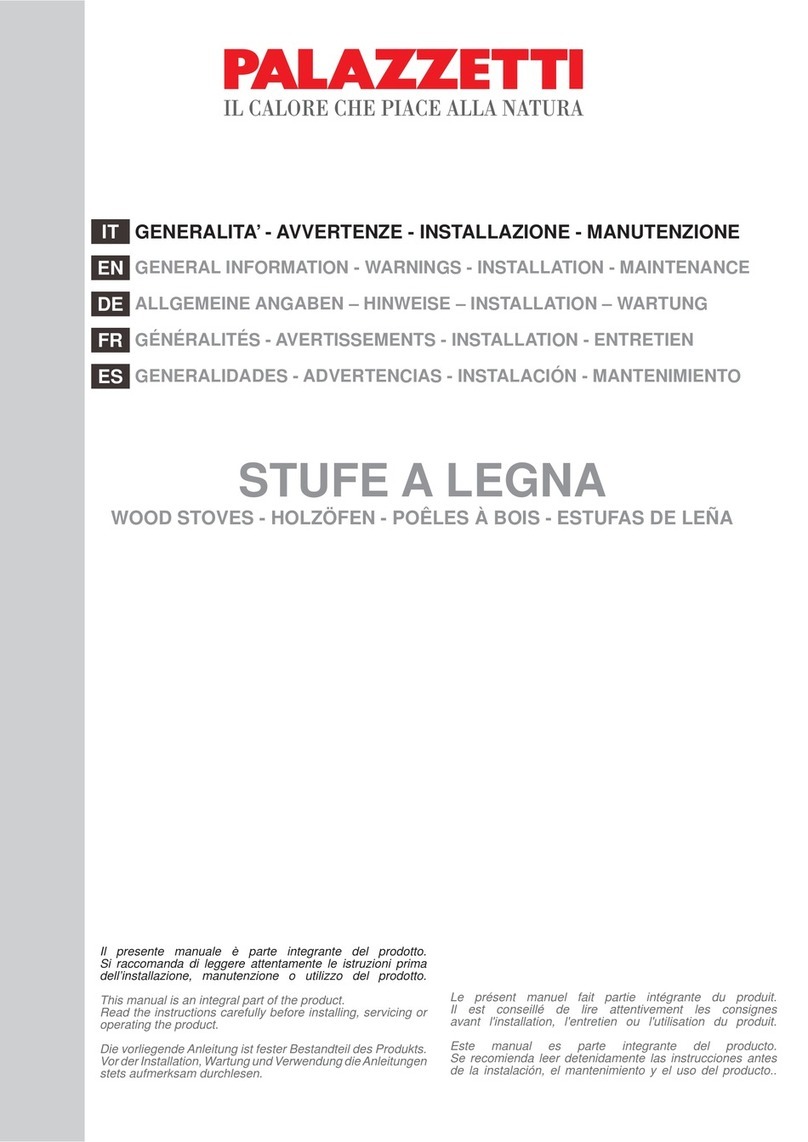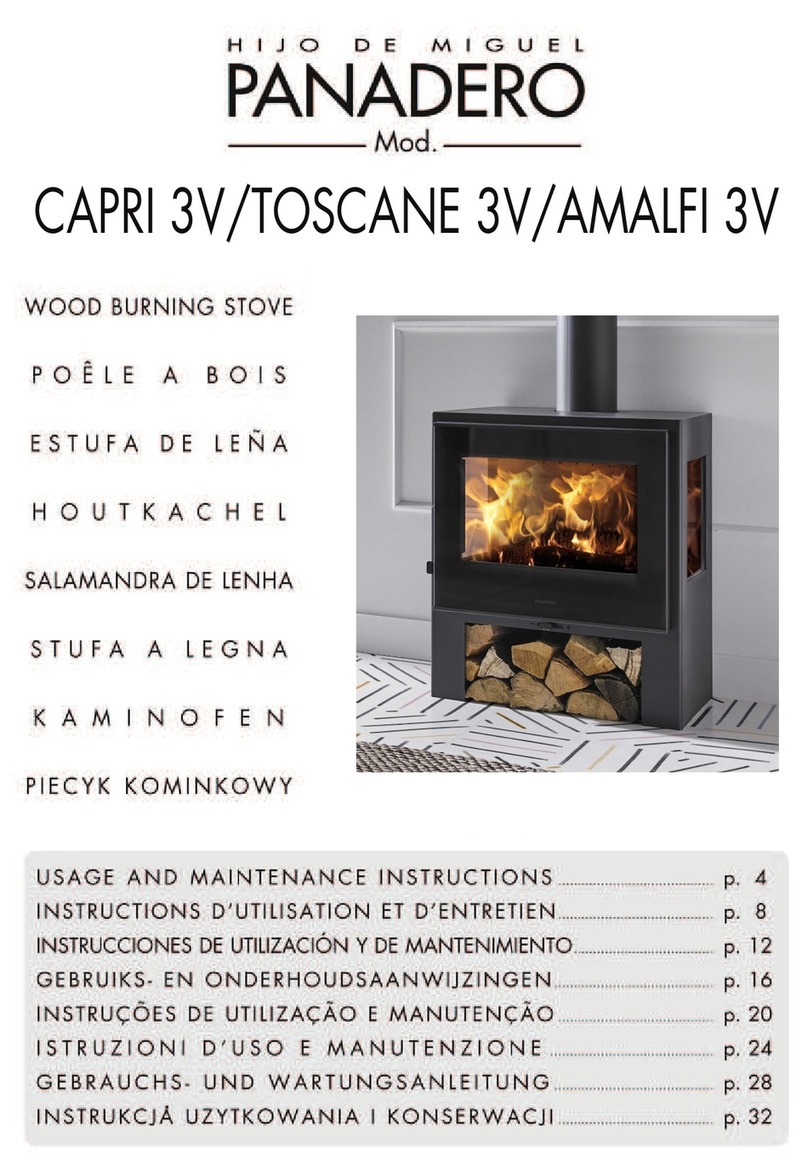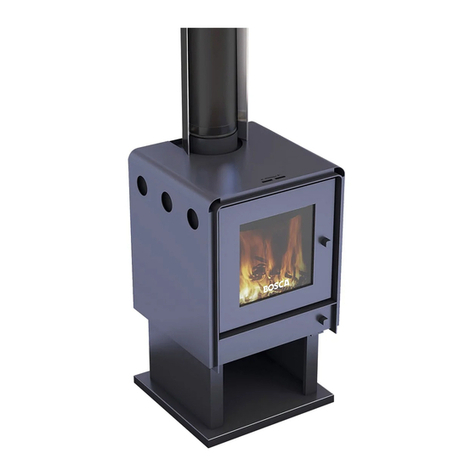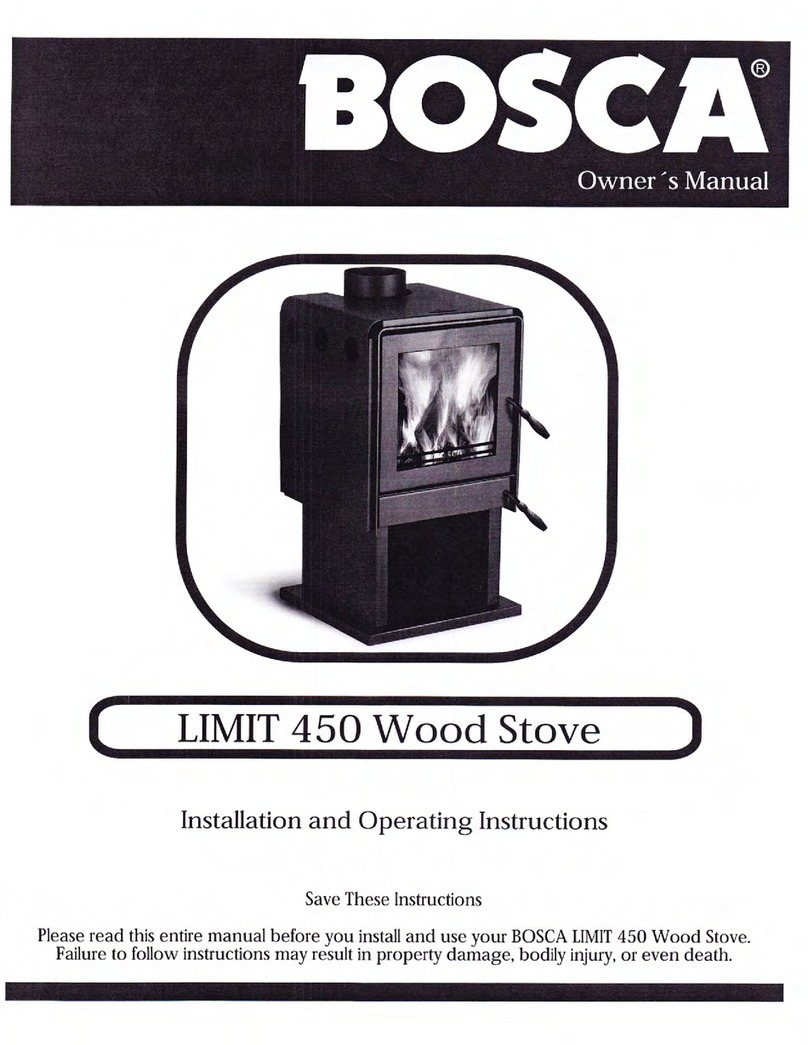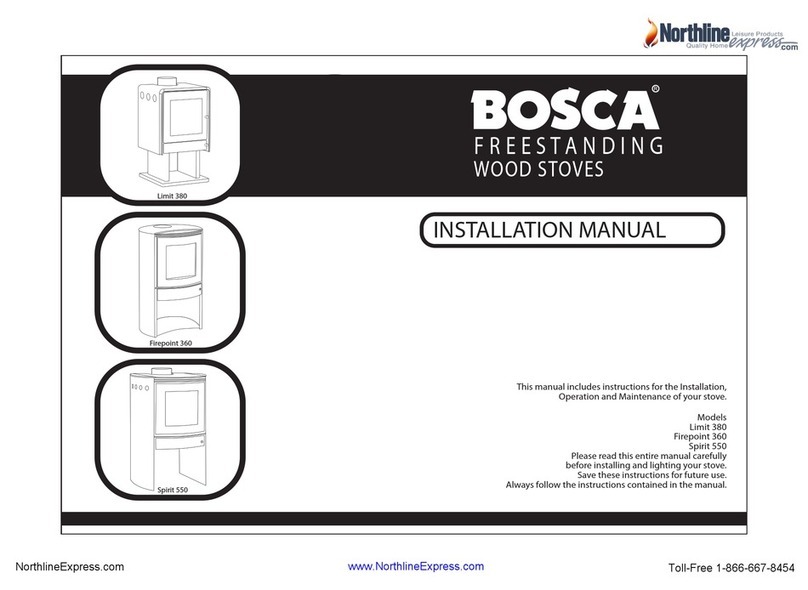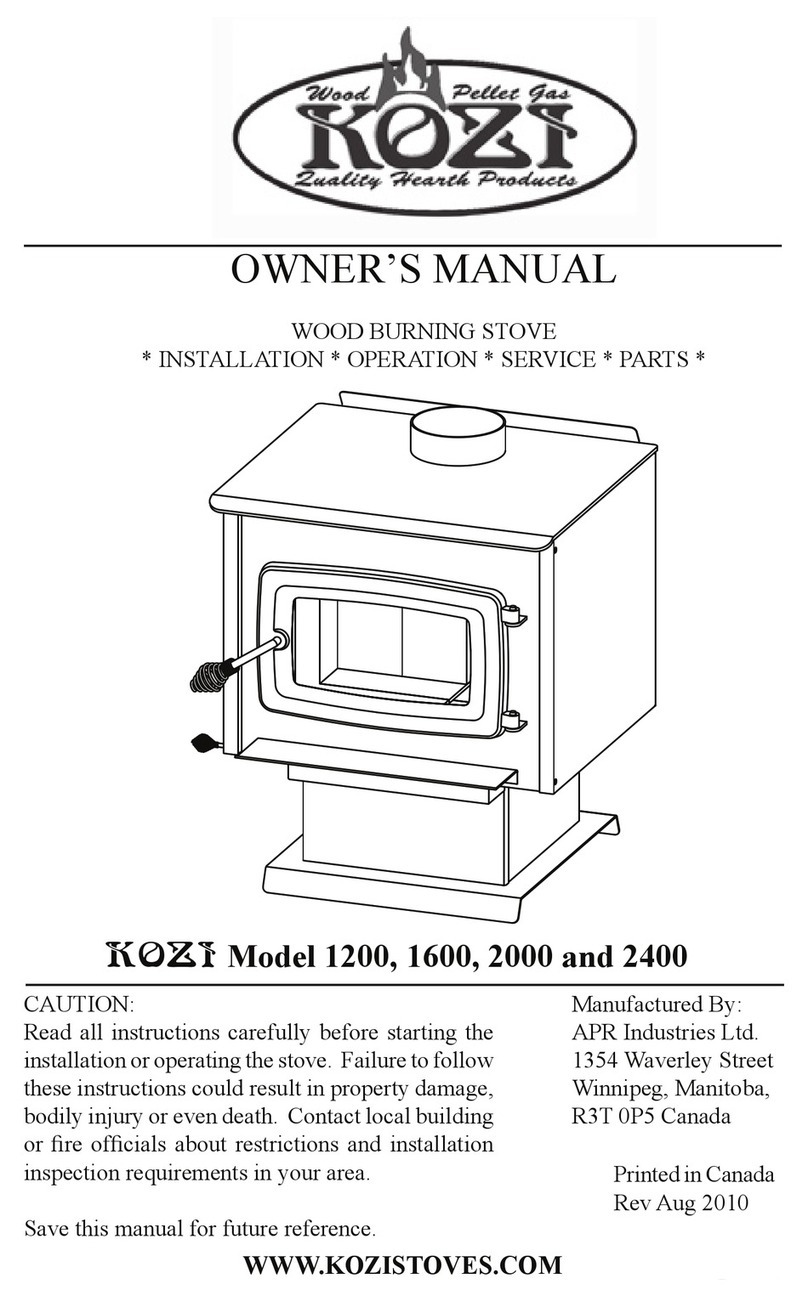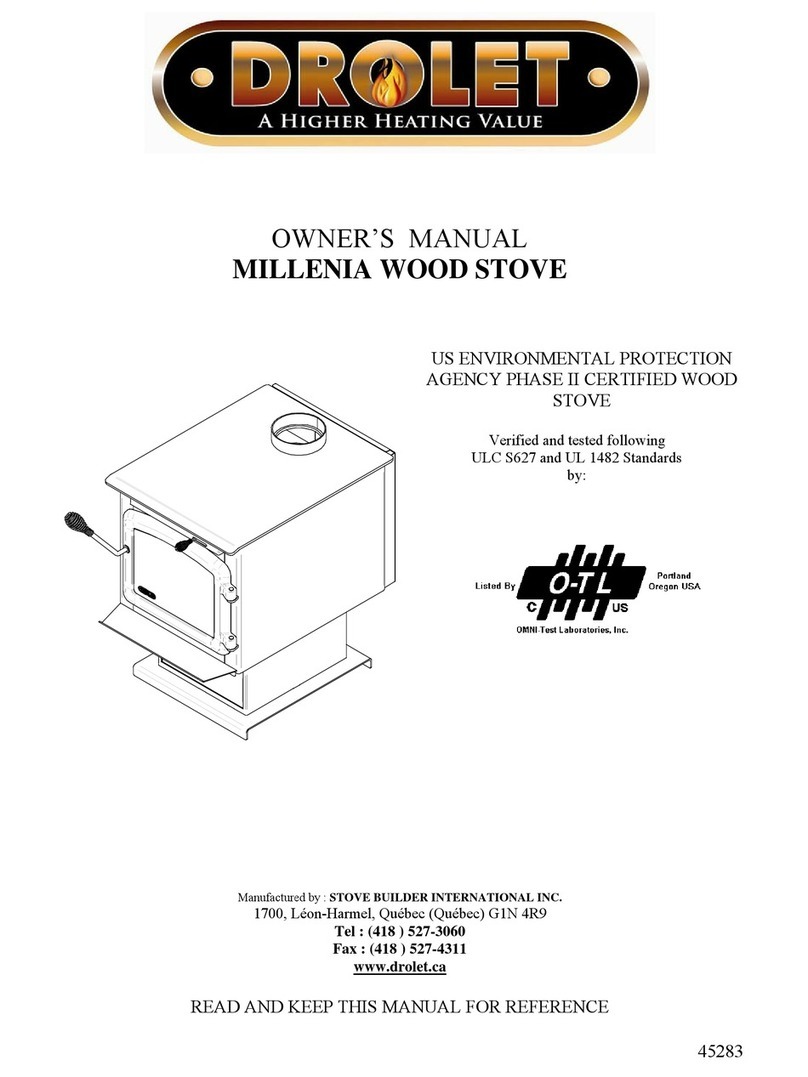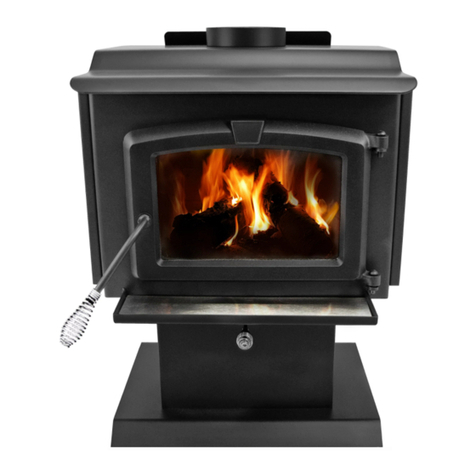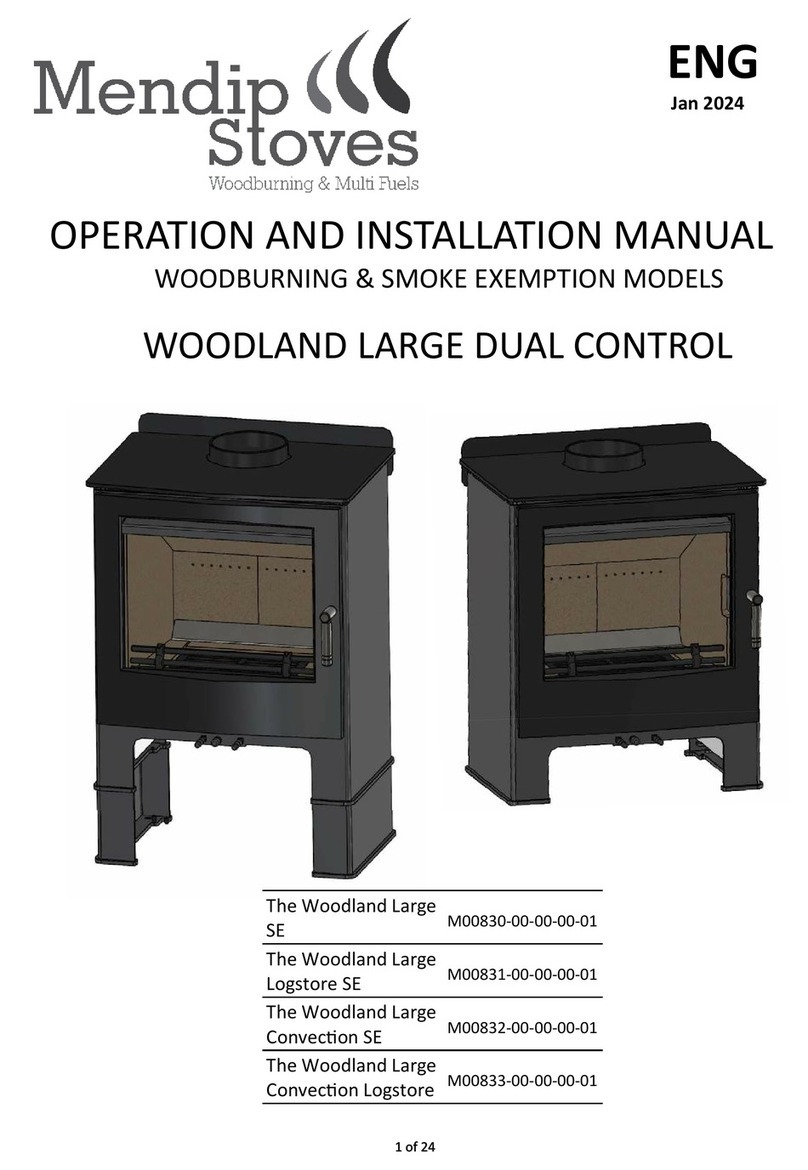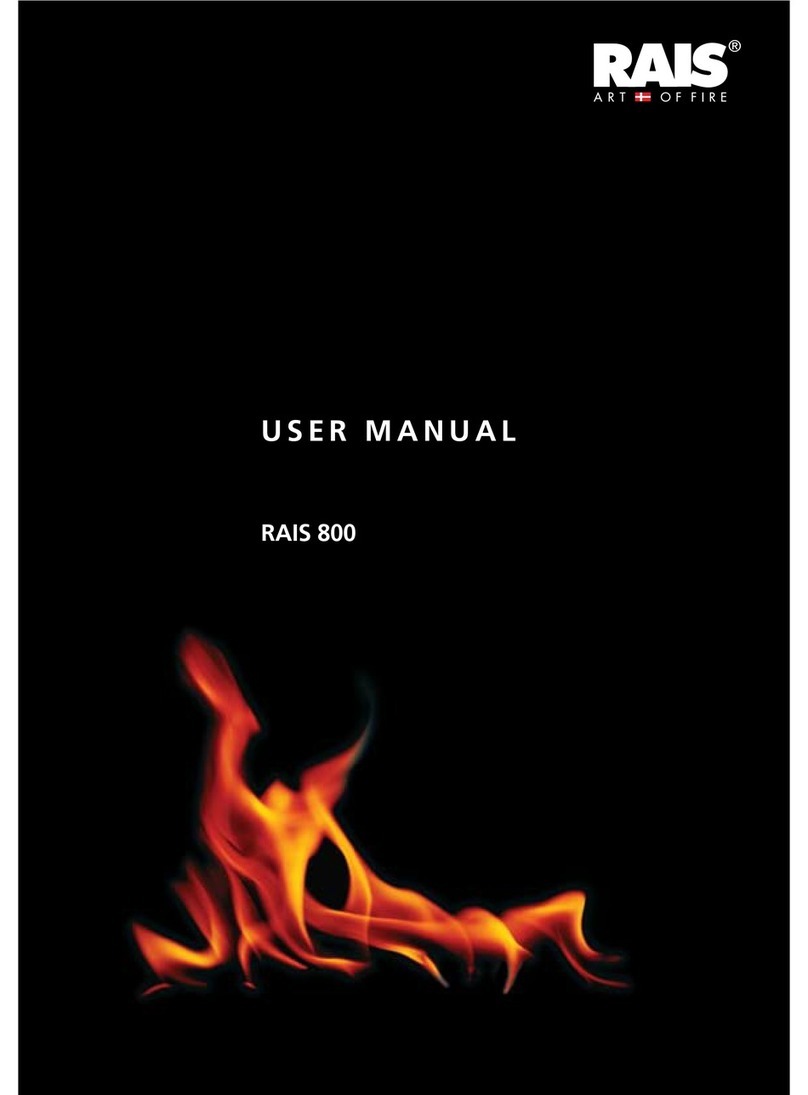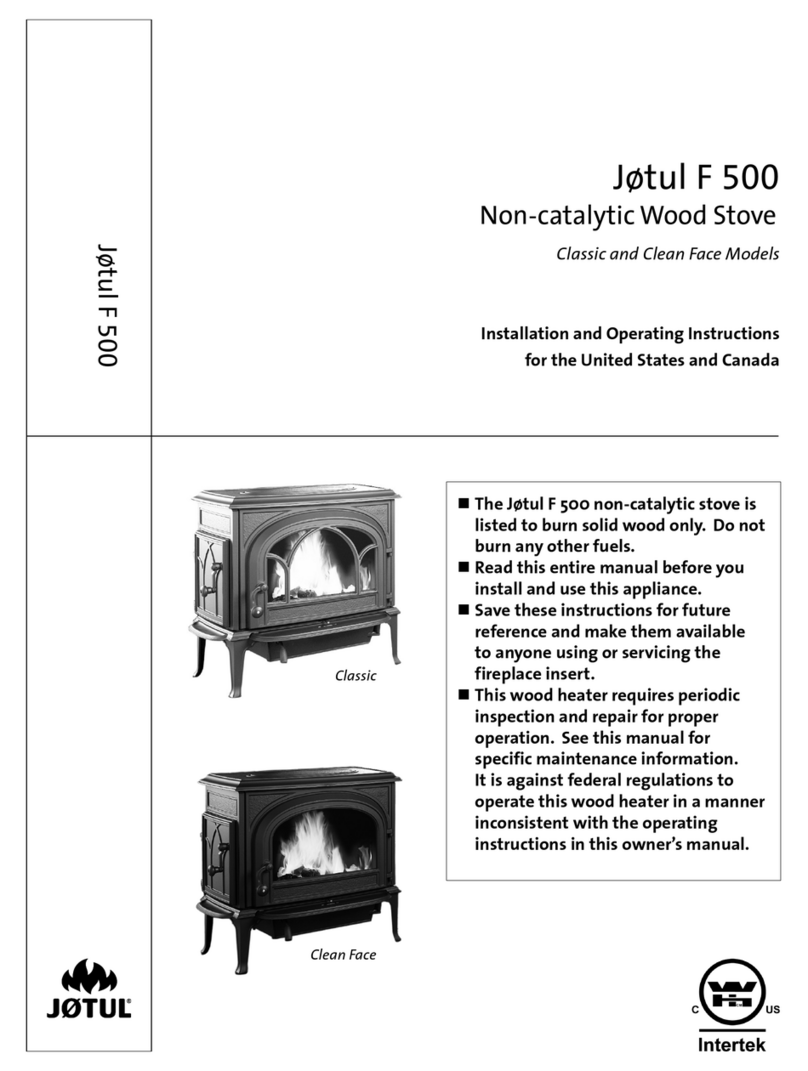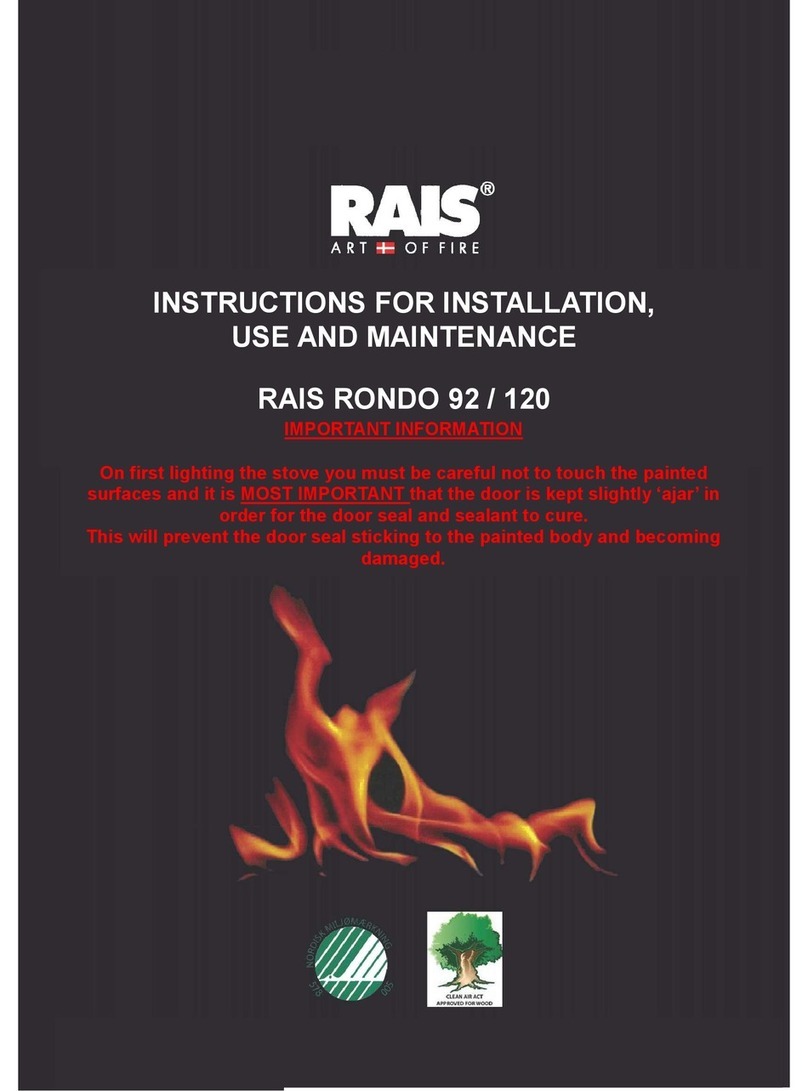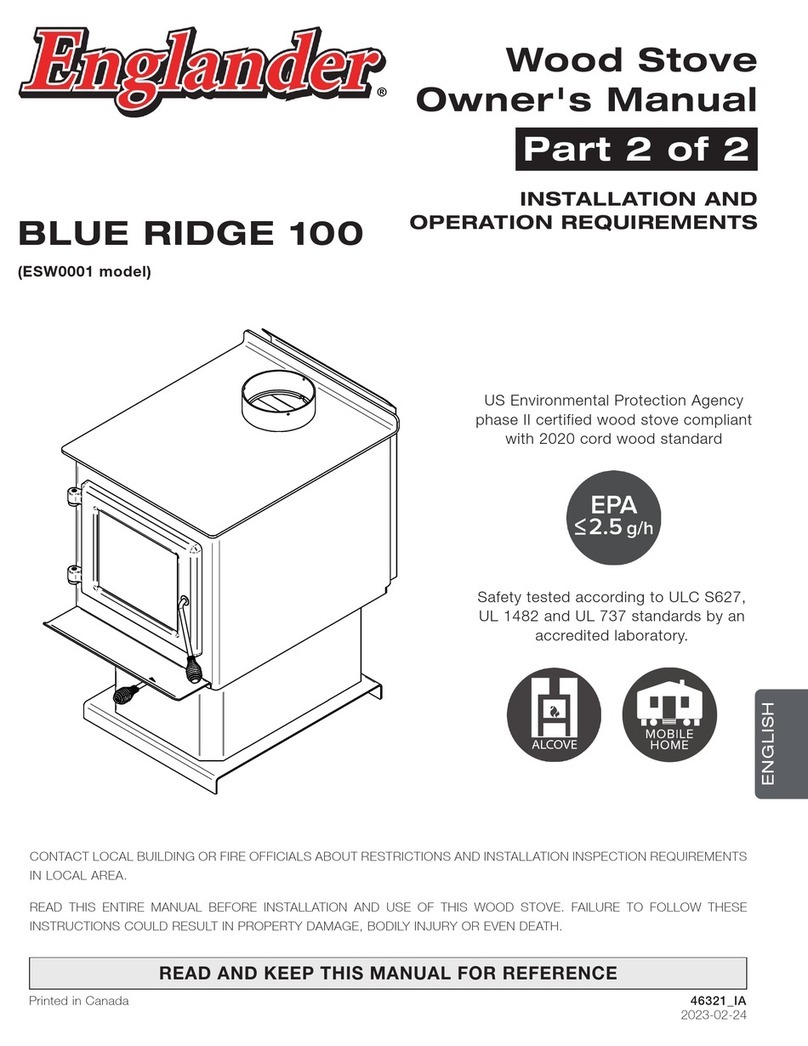Combustible Wall Chimney Connector Pass - Throughs
Minimum chimenev cleaance lo brick
and combustibles Z in. (50.8 mm)
rllll
tffi]
ffiEt
Tlffill
I lF:*r# ll
U-rT --11
Minimum 12 in. (304.8 mm)
to comhrrsiibles
E
O
Minimum clearance
9 in. (228.6 mm)
Chimnev
Conneclor
Use chimnev
mfrs. Darts td
attach connector
securely
U F7l' \ Solid-insulated
{-* fn Ulsted factorv buill
llqsoroy \ \ chimneylehght
Uhimney Sheet steel
supports
Minimum chrmeney clearance to
sheet steel suDborts and
combustibles 2 in (50.8 mm)
Two air channels
each lin. (25.4mm)
Chimney
conneal6r
Minimum 6 in.
(152.4 mm)
glass fiber insuhtion
Masonrv
Chimney iheet steel
supports
Minimum chimenev clearance to
sheet steel suDborts and
combustibles 2 iri. (50.8 mm)
Minimum clearance
1 in. (25.4 mm)
Masonrv
Chimne'y
NOTES:
Method 4.I2" (304.8 mm) Clearance to Combustible Wall
Member: Using a minimum thickness 3.5" (89 mm) brick and
a 5/8" (15.9 mm) minimum wall thickness clay liner, construct
a wall pass{hrough. The clay liner must conform to ASTM C31 5
(Standard Specification for Clay Fire linings) or its equivalent.
I(eep a minimum of 12" (304.8 mm) of brick masonry between
the clay liner and wall combustibles. The clay liner shall run
from the brick masonry outer surface to the inner surface of the
chimney flue liner buinot past the inner surface. Firmly grout
or cement the clay liner in place to the chimney flue liner.
Method 8.9" (228.6 mm) Clearance to Combustible Wall
Member: Using a 6" (L52.4 mm) inside diameter,listed, factory-
built Solid-Pak chimney section with insulation of 1" (25.4 mm)
or more, build a wallpass-through with a minimum 9" (228.6
mm) air space between the outer wall of the chimney length
and wall combustibles. Use sheet metal supports fastened
securely to wallsurfaces on all sides, to maintain the 9" (228.6
mm) air space. When fastening supports to chimney length,
do not penehate the chimney liner (the inside wall of the Solid-
Pak chimney). The inner end of the Solid-Pak chimney section
shallbe flush with the inside of the masonry chimney flue, and
sealed with a non-water soluble refractory cement. Use this
cement to also seal to the brick masonry penetration.
Method C. 6" (152.4 mm) Clearance to Combustible Wall
Member: Starting with a minimum 24 gage (.02a" [.61 mml)
6" (152.4 mm) metal chimney connector, and a minimum24
gage ventilated wall thimble which has two air channels of 1"
(25.4 mm) each, construct a wall pass-through. There shall be
a minimum 6" (152.4) mm separation area containing fiberglass
insulation, from the outer surface of the wall thimble to wall
combustibles. Support the wall thimble, and cover its opening
with a Z$-gage minimum sheet metal support. Maintain the 6'
(152.4 mm) space. There should also be a support sized to fit
and hold the metal chimney connector. See that the supports
are fastened securely to wall surfaces on all sides. Make sure
fasteners used to secure the metal chimney connector do not
penetrate chimney flue liner.
Method D. 2" (50.8 mm) Clearance to Combustible Wall
Member: Start with a solid-paklisted factory built chimney section
at least 12" (3O4 mm) long, with insulation of 1" (25.4 mm) or
more, and an inside diameter of 8" (2 inches [51 mm] larger
than the 6" 1152.4 mml chimney connector). Use this as a pass-
through for a minimum Z\-gage single wall steel chimney
connector. Keep solid-pak section concentric with and spaced
1" (25.4 mm) offthe chimney connector by way of sheet metal
support plates at both ends of chimney section. Cover opening
with and support chimney section on both sides with 24 gage
minimum sheet metal supports. See that the supports are fastened
securely to wall surfaces on all sides. Make sure fasteners used
to secure chimney flue liner.
1. Connectors to a masonry chimney, excepting method B, shall extend in one continuous section through the wall pas{hrough system and the chimney wall, to but not past
the inner flue liner face.
2. A chimnev connector shall not an attic or roof space, closet or similar concealed space. or a floor. or



